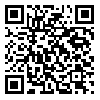Volume 10, Issue 4 (1-2021)
2021, 10(4): 83-98 |
Back to browse issues page
Download citation:
BibTeX | RIS | EndNote | Medlars | ProCite | Reference Manager | RefWorks
Send citation to:



BibTeX | RIS | EndNote | Medlars | ProCite | Reference Manager | RefWorks
Send citation to:
Fatholahi S, Ehsanzadeh P, Karimmojeni H. Nitrogen Remobilization and N-P-K Concentration of Wheats of Different Ploidy Levels Respond Differently to Nitrogen Supply. Journal of Crop Production and Processing 2021; 10 (4) :83-98
URL: http://jcpp.iut.ac.ir/article-1-2997-en.html
URL: http://jcpp.iut.ac.ir/article-1-2997-en.html
Isfahan University ot Technology , ehsanzadehp@gmail.com
Abstract: (2590 Views)
Relationship of nitrogen (N) supply to nitrogen remobilization and leaf and grain P, K, and N status of wheat lacks clarity. The present pot experiment was conducted to evaluate nitrogen remobilization and leaf and grain P, K, and N status of ancient wheats of different ploidy levels in response to nitrogen. The experiment was carried out in Fall 2017-Spring 2018 at the Isfahan University of Technology, Isfahan, Iran. The experiment was designed as a 3-replicate factorial completely random design with N fertilization treatment (at four levels of 0, 18.66, 37.33, and 56 mg N kg-1 soil) and genotype (consisting of 12 genotypes) as experimental factors. Nitrogen remobilization of the ancient and hulled wheats were increased when exposed to the low and medium N supplies. However, the Nitrogen remobilization of the standard durum and bread wheats were increased with increases in the N supply. Leaf and grain P, leaf N, and grain K concentrations responded positively to the N supply and ancient and hulled wheats equaled or exceeded those of the improved wheats particularly when grown in the absence of high N supplies. The presented data indicates that in conditions of nitrogen deficiency, the ancient wheats outperform improved wheats in terms of absorption and utilization of macronutrients.
Send email to the article author
| Rights and permissions | |
 | This work is licensed under a Creative Commons Attribution-NonCommercial 4.0 International License. |







